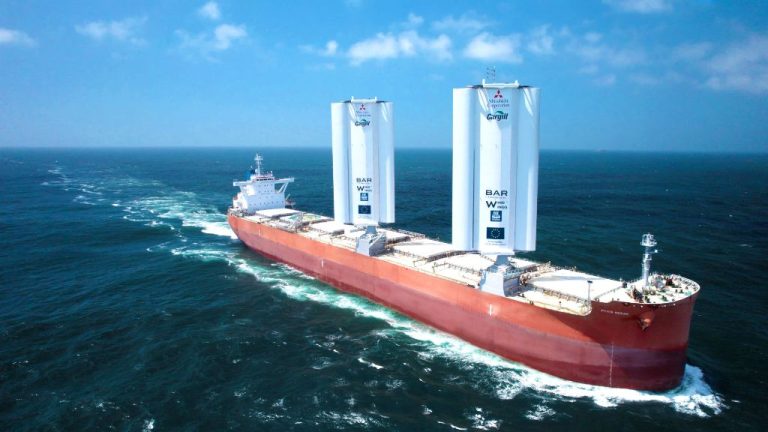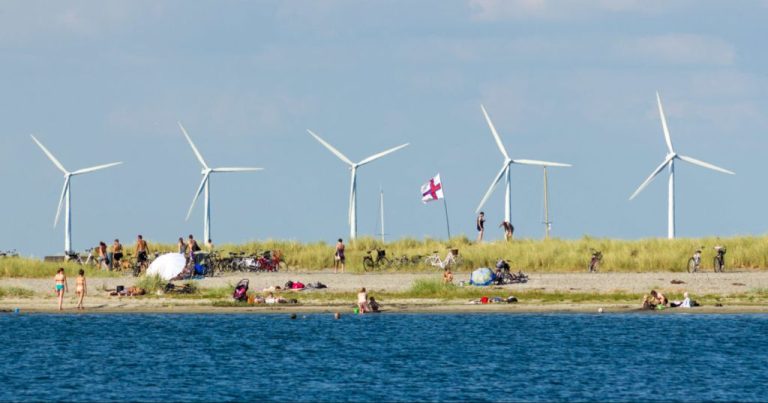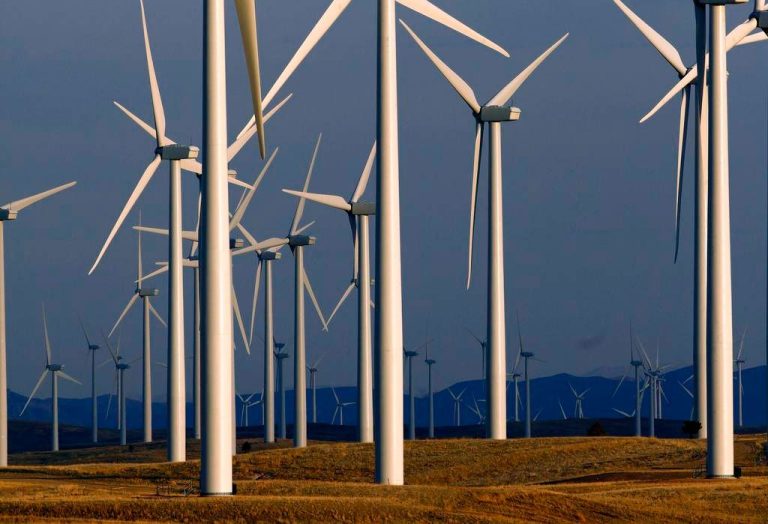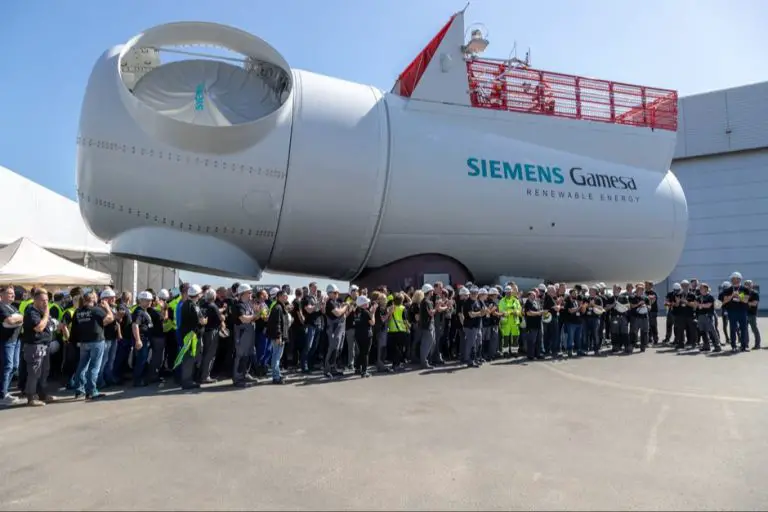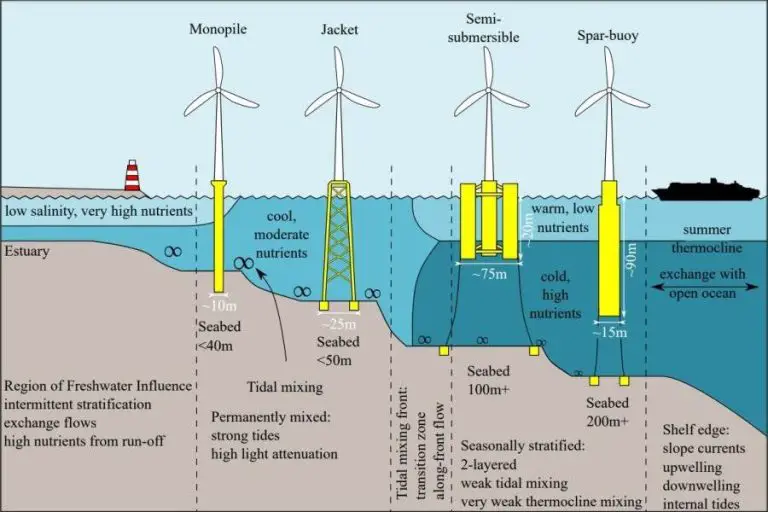How Efficient Is Wind Energy Compared To Others?
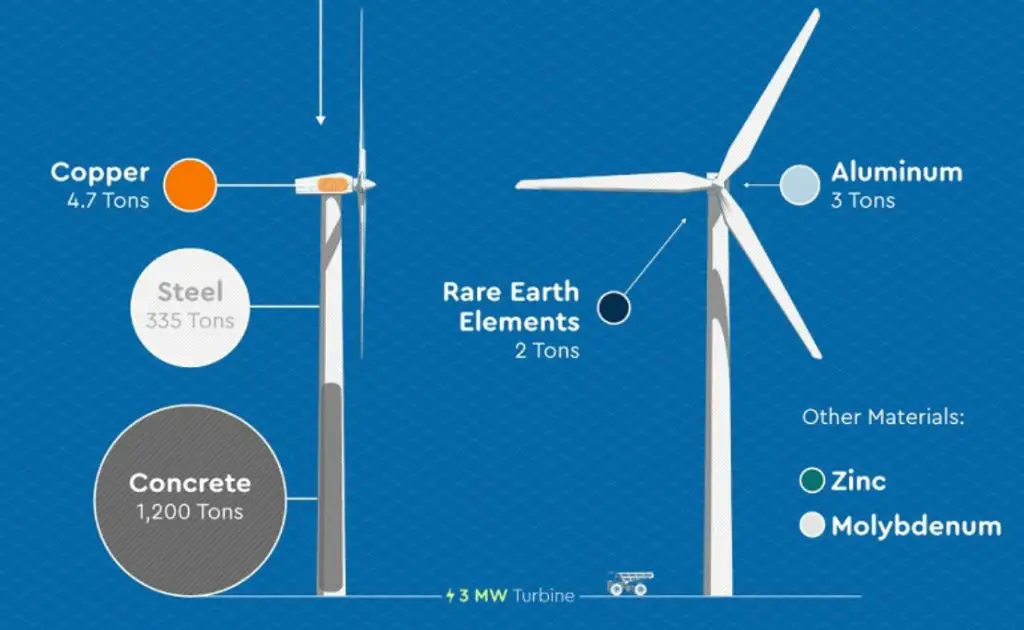
Wind energy has seen tremendous growth in recent years as a renewable and clean source of electricity generation. According to the American Wind Energy Association, the amount of wind energy capacity in the U.S. has increased over 10-fold in the last decade, from 25,000 megawatts in 2008 to over 122,000 megawatts in 2021. This growth has been driven largely by improvements in wind turbine technology, federal tax credits, and state-level renewable energy policies. As wind energy continues to expand, understanding the efficiency and capacity of wind power compared to other energy sources will be important for energy planning and meeting emissions reduction goals.
Wind Turbine Efficiency
The efficiency of wind turbines is typically measured using metrics such as the capacity factor, power coefficient, and tip speed ratio. The capacity factor represents the ratio of the actual electrical energy output over a period of time compared to the hypothetical maximum output if the turbine operated at full capacity 100% of the time. The capacity factor for wind turbines has improved dramatically over time, increasing from around 10-15% in the 1980s to above 40% for the latest turbine designs according to the Department of Energy.
Another common metric is the power coefficient, which measures how efficiently the turbine converts the kinetic energy of wind into electrical energy. The theoretical maximum power coefficient is around 0.59 (Betz limit), but commercial turbines achieve values between 0.35-0.45 in real-world conditions. The tip speed ratio, which compares the speed of the rotor tips versus the wind speed, is also optimized to capture the most energy.
Through better siting, increased turbine heights, improved blade aerodynamics, and other advancements, the average capacity factor for wind turbines in the United States has increased from 22% in 1998 to around 35% today. So while there is still room for improvement, modern wind turbines convert a far greater fraction of wind energy into usable electricity compared to decades past.
Cost Efficiency
When comparing energy sources, a useful metric is the levelized cost of energy (LCOE). This averages the total cost of building and operating a power plant over its lifetime. According to the US Energy Information Administration, the estimated LCOE of new onshore wind power plants coming online in 2022 is $37 per MWh. This compares favorably to other energy sources like gas combined cycle at $44/MWh, advanced nuclear at $90/MWh, and advanced coal with carbon capture at $132/MWh.
According to an analysis by investment bank Lazard, the unsubsidized LCOE for onshore wind ranges from $28–$54 per MWh, making it highly cost-competitive with conventional energy sources like coal and combined cycle gas. The levelized cost for utility-scale solar photovoltaics is similar at $32-44/MWh. Offshore wind is more expensive at $83-121/MWh, but costs are rapidly declining as the technology matures.
The falling LCOE of wind and solar contributes to their rapid growth compared to fossil fuels. While upfront capacity costs are higher, the fuel is free so operating costs are low. As technology improves, capacity factors increase and financing costs decline thanks to larger deployments. This has enabled wind and solar to undercut fossil fuels in many markets when health and environmental costs are considered.
Land Use Efficiency
Power density, or energy density, measures the energy output per unit of area. Wind farms typically have low power densities compared to other energy sources. According to a study, wind power has an energy density of around 0.5-3 W/m2, while solar photovoltaics can reach 200 W/m2.
Due to the low power density, wind turbines require a large land area to generate substantial amounts of electricity. Approximately 60 acres of land is required per megawatt of installed wind capacity, including access roads and spacing between turbines. In comparison, a natural gas power plant requires under 2 acres per megawatt.
So while the wind turbine footprint is relatively small, large wind farms can sprawl across hundreds or thousands of acres. However, the land between turbines can still be utilized for grazing or crops. Overall, wind power has a much lower land use impact than biomass or hydropower while generating more energy output than solar panels per unit of land area.
Capacity Factor by Location
The capacity factor of a wind turbine is highly dependent on wind speeds. Wind power density increases with the cube of wind speed, meaning a small difference in average wind speed can make a huge difference in potential power output. Areas with consistently higher wind speeds will have much higher capacity factors for wind power.
According to data from the Alberta Electric System Operator, wind capacity factors in Alberta, Canada vary significantly by region. The annual capacity factor in 2021 reached over 50% in the Ellerslie region but was under 30% in the Fort Macleod region (AESO, 2022). Studies of potential wind sites across the globe have found similar regional variations. Analysis of over 800 sites in the Dominican Republic found capacity factors ranging from less than 20% to over 45% depending on the location (Fried & Shukla, 2017). The Midwest region of the United States also shows relatively high capacity factors due to consistent wind resources.
Therefore, site selection is critical in maximizing wind power production. Regions with higher average wind speeds and steadier resources throughout the year see substantially higher capacity factors from wind turbines.
Impacts on Wildlife
Wind turbines can have negative impacts on birds and bats if not properly sited and mitigated. Birds are at risk of collision with turbine blades, while bats are susceptible to barotrauma from changes in air pressure near operating turbines (Arnett et al., 2016). Studies have estimated hundreds of thousands of bird and bat fatalities per year in the U.S. from wind turbines.
There are ways to mitigate these impacts through proper siting, operations, and deterrence techniques. For example, blinking lights have been found to reduce bird collisions at wind farms (Telegram, 2011). Other strategies include altering blade speed, avoiding key migration paths, and deterring wildlife using sounds or barriers (Arnett et al., 2016). With appropriate mitigation measures, wind energy’s impacts on birds and bats can be significantly reduced.
Public Opinion
Surveys show that most Americans support expanding wind energy. A 2021 Pew Research Center survey found that 67% of U.S. adults favor more wind turbine farms, while only 30% oppose building more. Republicans were less likely to support more wind farms, with only 43% in favor compared to 83% of Democrats (Pew Research Center).
A 2021 Berkeley Lab survey of people living near U.S. wind projects found high levels of acceptance, with 82% of participants saying wind projects have been a benefit to the local area (Berkeley Lab). Those living closest to turbines were equally as supportive as people living farther away.
However, some opposition exists in areas where wind farms are proposed. Concerns include impacts on wildlife, noise, visual impacts on the landscape, and decreases in property values. Proper siting to minimize impacts on local communities is key to gaining public acceptance.
Offshore Wind Potential
Offshore wind speeds tend to be faster and more consistent than onshore wind speeds. This allows offshore wind turbines to produce more energy. According to a report by the National Renewable Energy Laboratory, there is over 2,800 GW of offshore wind potential in the waters off the coasts of the contiguous United States. This is enough to provide more electricity than what is currently consumed in the country. https://www.nrel.gov/news/program/2023/what-will-it-take-to-unlock-us-floating-offshore-wind-energy.html
The costs of offshore wind have been coming down. Recent offshore wind projects have been priced very competitively with other sources of electricity generation. With the large potential capacity for offshore wind in the U.S., costs are expected to continue to decline as the industry scales up. Floating offshore wind technology specifically has the potential to unlock even more offshore capacity in the future as it opens up deeper waters for development.
Future Improvements
The wind energy industry is actively researching and developing new turbine designs and innovations that can further reduce costs and improve efficiency. Some key areas of focus include:
Larger turbines – Turbines with larger rotors and taller towers can capture more wind energy. According to the U.S. Department of Energy, experts predict cost reductions of 17-35% by 2035 driven by bigger turbines. (Experts Predict 50% Lower Wind Costs Than They Did in 2015)
Floating offshore wind – Floating platforms allow offshore turbines to be installed in deeper waters further from shore where winds are stronger and more consistent. Projections estimate cost reductions to $60/MWh for floating offshore wind by 2030. (2021 Cost of Wind Energy Review)
Improved O&M – Developments in remote monitoring, predictive maintenance, and robotic inspection can reduce operations and maintenance costs for onshore and offshore wind farms.
In total, experts predict 37-49% reductions in the cost of wind energy by 2050 compared to 2020 costs. Continued technology innovation and economies of scale will enable wind to remain cost-competitive with conventional power sources. (Expert Elicitation Survey)
Conclusion
In summary, wind energy has demonstrated high levels of efficiency in numerous areas compared to other energy sources. Modern wind turbines can convert over 50% of wind energy into electricity, making them highly cost and land efficient. Capacity factors for wind farms range from 25-50% based on location, competitive with other renewable sources. While wind turbines can negatively impact wildlife, advances in technology and proper siting help minimize effects. Public opinion polls consistently show widespread support as an affordable, renewable energy source. Offshore wind holds great potential to harness stronger, more consistent winds. Continued improvements in turbine design and height will further increase efficiency and output of wind farms.
Overall, wind energy serves as a critical piece of the global energy transition away from fossil fuels. As a mature, scalable technology with competitive efficiency, wind will likely provide 20-30% of electricity generation by mid-century according to energy agencies. With proper planning and siting, wind can continue displacing greenhouse gas emissions from fossil fuels and enabling the decarbonization of the power sector.

